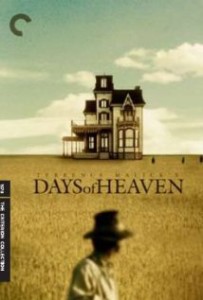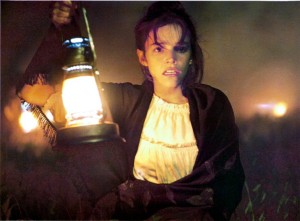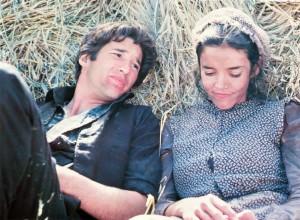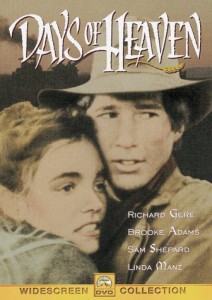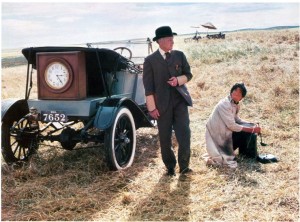Days of Heaven ***** (1978, Richard Gere, Brooke Adams, Sam Shepard) – Classic Movie Review 2995
Writer-director Terrence Malick’s second movie after his impressive debut with Badlands in 1973 is this startlingly and spectacularly beautiful 1978 movie focusing on a ménage à trois love story set among the wheatfields of the American mid-West in 1916.
Cinematographer Nestor Almendros won a much deserved Best Cinematography Oscar in 1979 for his stunning images, and there were nominations for Patricia Norris (Best Costume Design), Ennio Morricone (Best Original Score) and Best Sound. At the Baftas in 1979, Morricone won the Anthony Asquith Award for Film Music.
Bill and Abby are a young couple who pretend to be brother and sister in Chicago at the beginning of the last century. They head south and find work on a farm in the Texas panhandle.
A very young-looking Richard Gere (the ‘brother’), Brooke Adams (the ‘sister’) and Sam Shepard (the farm owner) play characters who exist in an epic world of signs, significance, meaning and romance that lends a mythic quality to the frustratingly featherweight story.
Gere (already 29) plays the lead role of Bill, the hot-tempered farm labourer who convinces Abby (Adams), the woman he loves, to marry their rich, dying farmer boss (Shepard) so they can claim his fortune.
It is impossible not to be bowled over by the visual grandeur of the work and it is distressing that Malick (who won the New York Film Critics and Cannes Film Festival awards for Best Director) had a 20-year layoff after this movie’s financial failure.
Like his first film, Badlands, this is film-making of the highest quality. Both pictures – and their director – have now attained near-legendary status.
Robert J Wilke is notable as the Farm Foreman. It also features Linda Manz as Linda, the girl who acts as the narrator in the movie, Stuart Margolin, Richard Libertini, Tim Scott, Gene Bell, Doug Kershaw and Jackie Shultis.
It was shot with a new Eastman ultra light-sensitive stock negative in Alberta, Canada, almost entirely at the ‘magic hour’, the time between day and night early in the morning and late in the evening. It was the first film to use the Panaglide, an early form of Steadicam. After some filming, Malick threw out the script and filmed for nearly a year to allow the actors to ‘find the story’ as they went along. He then spent two years editing.
Malick made no other film till The Thin Red Line in 1998.
http://derekwinnert.com/the-thin-red-line-classic-film-review-478/
© Derek Winnert 2015 Classic Movie Review 2995
Check out more reviews on http://derekwinnert.com

